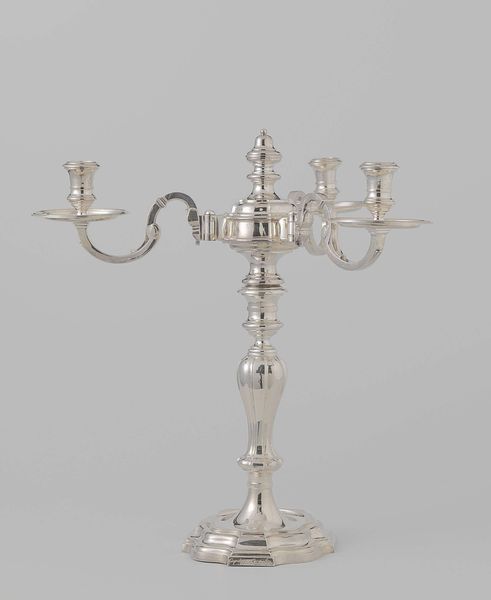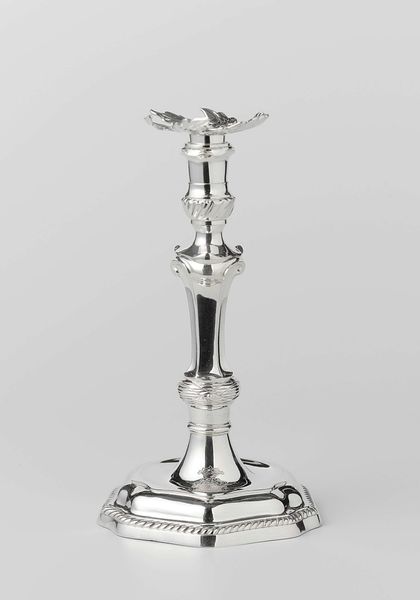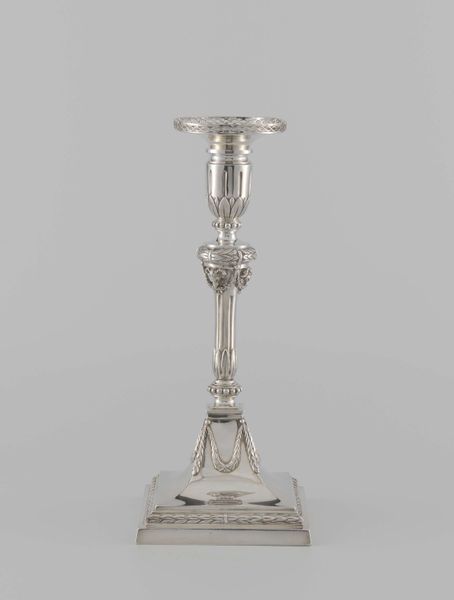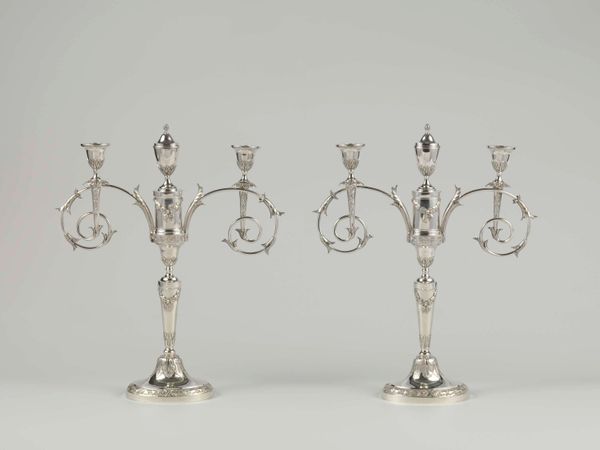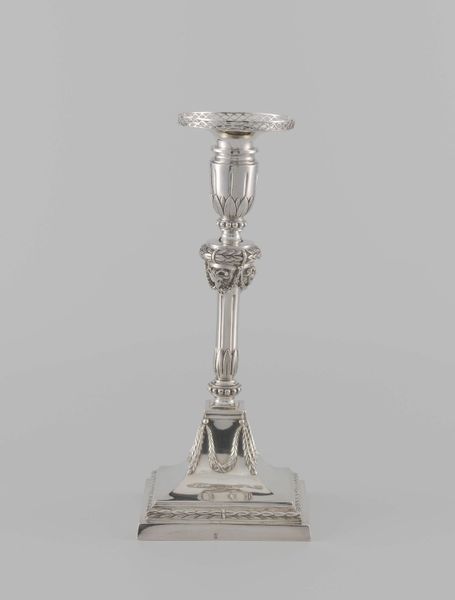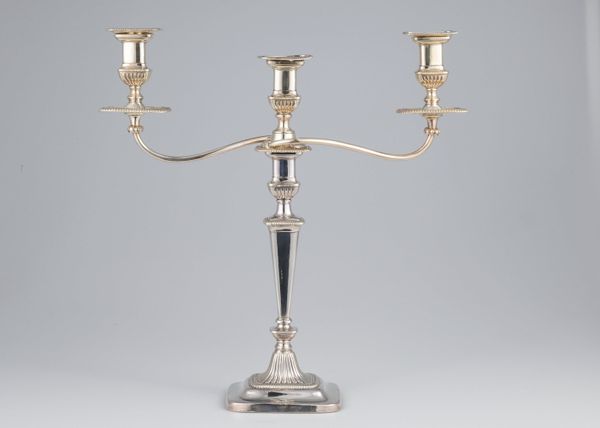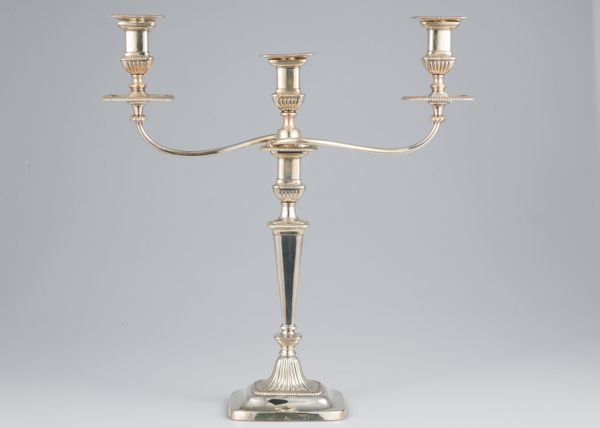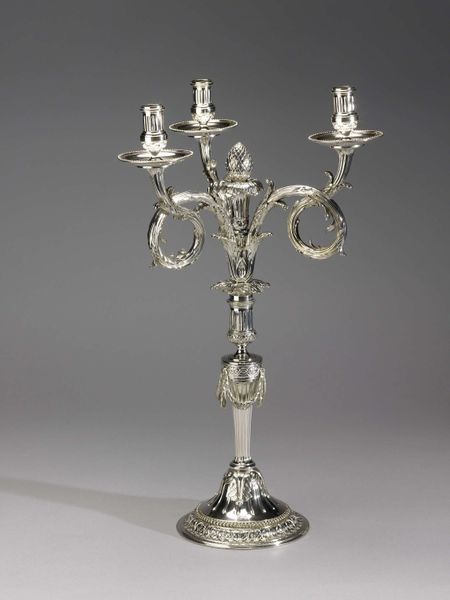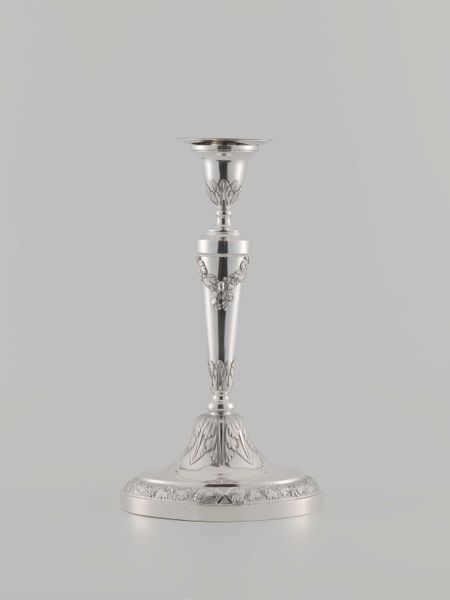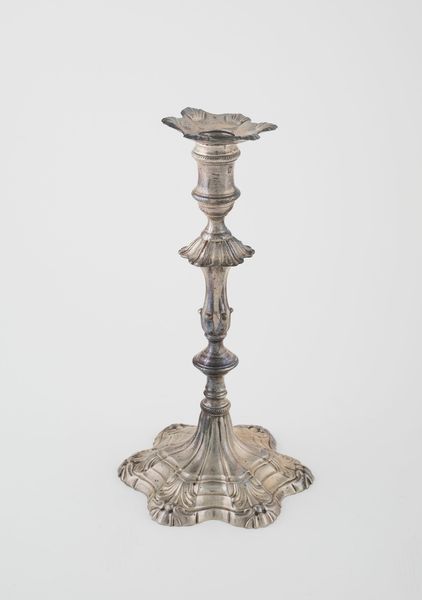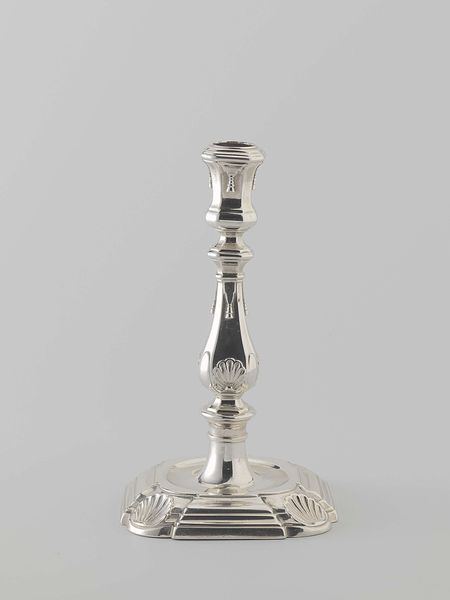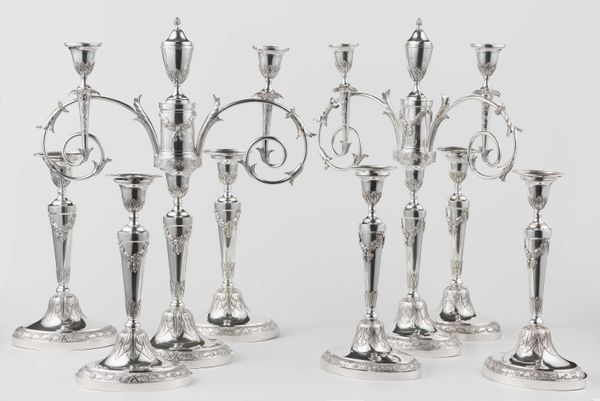
silver, metal, sculpture
#
neoclacissism
#
silver
#
metal
#
sculpture
#
sculpture
#
decorative-art
Dimensions: height 28.7 cm, width 11.3 cm, length 16.3 gr, weight 498.0 gr
Copyright: Rijks Museum: Open Domain
Curator: Here we have a silver candelabra crafted in 1803 by Francois Marcus Simons. What strikes you most about this piece? Editor: The sheen is undeniable! The smooth surface of the silver gives off a regal vibe. It also looks surprisingly light, yet substantial. I imagine the maker was someone who knew how to extract beauty through careful processes. Curator: Absolutely. Silver as a material inherently suggests purity, luxury, and a certain status. Simons seems to be playing on those established associations, embedding the social significance of the time. Notice how it evokes a kind of controlled radiance. Editor: That controlled radiance—yes! There’s a restrained elegance here, compared to, say, baroque flamboyance. And consider the craft involved in shaping the silver, the chasing and possibly casting involved. Was it a commission, I wonder? Curator: It is very likely. During the Neoclassical era, candelabras were frequently commissioned to signify refinement and adherence to the stylistic dictates that were fashionable in noble or bourgeois houses. The piece evokes ideals of beauty, reason, order. These leaves, as decoration, suggest classicism's affinity for ancient Roman and Greek art and philosophy. Editor: Precisely! The ornamentation is restrained yet speaks to wealth and power. But how interesting to ponder who did the labour? The transformation of raw metal into a piece like this reflects material conditions—access to tools, workshops. And where did the silver originate? The making-of reveals so much about its origins. Curator: It's interesting you mention origins, because the symbolism in this candelabra gestures towards a desire for cultural continuity with antiquity—with an eye to perceived republican ideals, of course, though serving the purpose of imperial, then royal display in this particular time in history. It's layered with intended meaning! Editor: Very much so! Next time I use one of these I’ll have to think about everything it signifies from labor to cultural values. Curator: I'll definitely keep the historical context of status and style in mind when I look at similar pieces.
Comments
No comments
Be the first to comment and join the conversation on the ultimate creative platform.
